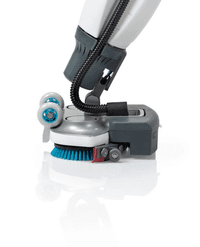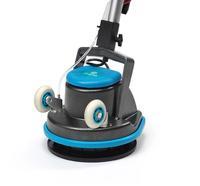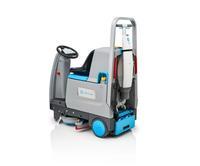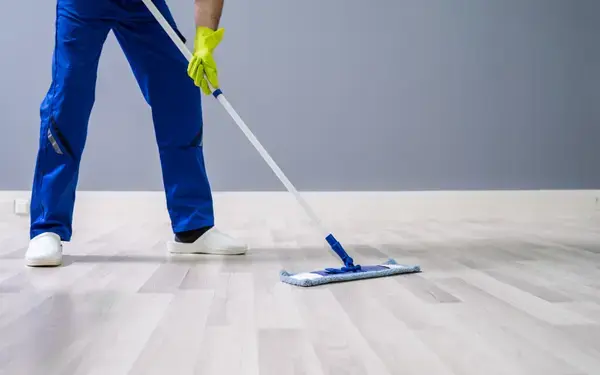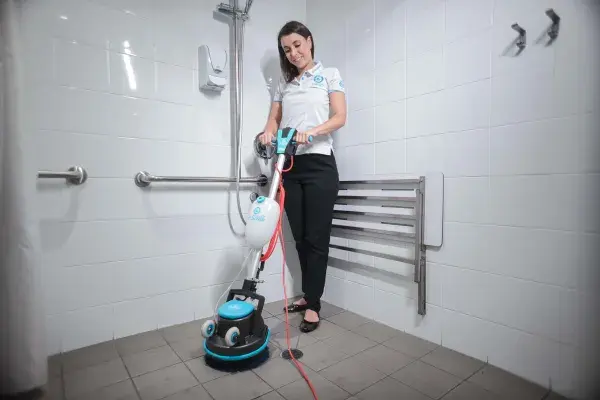You are reading: Top 5 Floor Scrubber Problems and How to Avoid Them
01 September 2022
4min read time
Brooke Payne
Top 5 Floor Scrubber Problems and How to Avoid Them
Share:

Key Insights
- Water Pickup Issues: If your floor scrubber isn’t picking up water effectively, check for blockages in the hose, filters, and squeegee system. Inspect and replace squeegee rubber if necessary.
- Poor Cleaning Results: To improve cleaning performance, ensure the brushes, pads, and chemicals are appropriate for the surface and condition. Avoid excessive chemical use to prevent residue buildup.
- Water Dispersion Problems: If water isn’t being released properly, check for blockages in the solution filter and solenoid, and ensure the solution tank is filled and controls are set correctly.
If you’ve had issues with your floor scrubber machine, or you’re looking for some simple preventative maintenance tips, you’re in the right place. Better still, these problems and simple fixes are applicable to all types of floor scrubbers found in Australia, so with that in mind, let’s talk about the top five floor scrubber problems, and how to avoid them.
1.Your floor scrubber is not picking up water effectively
One of the most common issues we’ve seen with floor scrubbers is that they don’t pick up the water while passing over a surface. In the majority of cases, this is a simple fix, as long as you know what you’re looking for.
Solution and Prevention Methods
First up, have a visual inspection of the hose, filters and the squeegee system for any debris that might have accumulated, which causes a blockage. Floor scrubbers that aren’t picking up water often have a blockage somewhere, which is a simple fix.
If you’ve checked for blockages and the problem persists, it’s time to check the squeegee rubber for any signs of damage, and to ensure you’re using the right type of rubber for the surfaces you’re cleaning. For example, hard floors are best suited to a Linatex rubber, while polyurethane are perfect for rough, non-slip surfaces.
You can also use something like gum rubber for your hard floor cleaning, but because they’re the cheapest option, they’re prone to wear down faster than other rubbers.

2.Poor Cleaning Results
If you’re unhappy with the cleaning performance of your floor scrubber, this could be the result of both issues with the machine, as well as operator error. Thankfully, there’s three simple fixes at hand.
Solution and Prevention Methods
This issue is typically caused by the floor scrubber having worn, or the wrong type of brush or pad, or the operator using the wrong type of chemical. To address the problem, first check the brushes and pads that you’re using for any signs of wear, and ensure that you’re using the right type of brush or pad for the surface that you’re cleaning.
Next, make sure that you’re using the right type of chemical, specific to the dirt or stains that you’re trying to remove. As a general guide, organic material like mould, proteins and oily substances are best cleaned by an alkaline-based chemical, while an acidic chemical solution is perfect for inorganic stains like limescale or oxidation.
Finally, check that you’re using the right amount of chemical dosing in your floor scrubber. We often see operators using too much of a single chemical, which can leave an unattractive chemical residue on the floor.
3.The Floor Scrubber is Not Releasing Water
If you’ve noticed that your floor scrubber isn’t dispersing water properly, there's a few simple things you can check. We’ve found that this problem is often caused by a blockage in the filter or the floor scrubber’s solenoid, or simple user error.
Solution and Prevention Methods
To address the problem of water dispersion issues, check that the solution tank is filled with water, and if the model you’re using has a top to control the flow, make sure it’s turned on.
Next, check the solution filter for any signs of debris that can cause blockages. If the problem persists, inspect the floor scrubber’s solenoid, which can become blocked by debris.
If you find any debris in the filter or solenoid, simply remove it and rinse with clean water.
4.Poor Runtime
Another common issue impacting floor scrubbers are issues of poor runtime, which can be the result of a number of things.
Solution and Prevention Methods
A common fix here is to secure any loose battery and terminal connections that might have come loose over extended use.
Next, make sure that you’re not running the floor scrubber with an excessive amount of pad pressure. This can become a problem particularly on rough surfaces, which increase the load on the motors, and can have a huge impact on run-time. The most common cause of runtime issues, though, are the batteries, which can degrade over time especially if you’re using a lead/acid or gel battery pack.
Floor scrubbers are typically powered by a lead/acid or gel battery mix, which require maintenance, while the leading scrubbers receive lithium-ion batteries. What most people don’t know is that lead/acid and gel batteries should not be discharged more than 50%, because if they’re pushed too far, the lifespan can drop dramatically.
Best practices for taking care of a battery pack are simple: make sure you’re charging them after each use, and make sure you’re regularly checking the water levels of a wet cell battery.
5.The Floor Scrubber Won’t Turn On
If your floor scrubber simply won’t turn on, there’s a few steps you can take.
Read what the differences are between the i-mop basic, plus and pro.
Solution and Prevention Methods
First, check the battery terminal to eliminate any loose connections, ensuring that the leads are secured tightly and don’t have any signs of damage. Next, check the fuses. Floor scrubbers often feature a set of resettable fuses that are designed to prevent the machine from overloading. Simply reset the fuse, and the floor scrubber should power on.
Finally, if the problem persists, check the state of the batteries, and ensure they’re fully charged. Sometimes, a battery left in storage for a long time can enter a deep sleep state and will need to be charged again to wake them up. As you can see, some of the most common floor scrubber problems can be avoided with some simple, consistent preventative measures. We recommend you take two minutes to clean the floor scrubber after use to minimise blockages, which can save you significant time and effort down the line.
If there’s something specific that you’d like answered, reach out to us here at i-team, and we’ll try to cover it in a future article.

People Also Ask: FAQ's
Why is my floor scrubber not scrubbing?
Verify whether the suction system or the suction hose is clogged. Also, check the condition of the suction filter and clean it if necessary. Ensure the suction hose is securely attached to both the recovery tank and the squeegee assembly of the scrubber dryer. Finally, evaluate the wear and tear of the suction system.
How do you maintain a floor scrubber?
Here are 10 DIY maintenance tips to keep your floor scrubber in top shape and extend its lifespan:
- Read the Owner’s Manual: Familiarize yourself with the manufacturer's guidelines and recommendations.
- Check the Battery: Ensure the battery is functioning properly and replace it if necessary.
- Inspect Pads, Brushes, and Squeegee: Examine these components for wear and tear and replace them if needed.
- Clean and Check Tanks, Hoses, and Filters: Regularly clean and inspect these parts to maintain efficient operation.
- Clean the Floor Scrubber: Keep the exterior and interior of the scrubber clean to prevent buildup and ensure optimal performance.
- Recharge the Battery: Properly recharge the battery after each use to maintain its longevity.
- Lubricate Hinges and Wheels: Apply lubricant to hinges and wheels to ensure smooth operation and reduce wear.
- Inspect the Suction System: Check for clogs in the suction system and clean or replace parts as needed.
- Check for Leaks: Regularly inspect for any leaks in the tanks or hoses and address them promptly.
- Monitor Performance: Pay attention to the scrubber’s performance and address any issues immediately to prevent more significant problems.
What is the life expectancy of a floor scrubber?
The lifespan of a floor scrubber typically ranges from 5 to 10 years. With proper maintenance and moderate use, a high-quality scrubber can often last beyond this period, providing reliable and efficient cleaning for a decade or more.
References
https://www.machines4u.com.au/mag/10-floor-scrubber-problems-you-can-fix/
https://www.alphapowercleaners.co.uk/common-problems-with-floor-scrubber-dryers-and-how-to-fix-them/
Watch the full video, Top 5 floor scrubber problems & how to avoid them here:
Products Featured Inside this Article
Media and Insights
Join the movement that's changing what clean means.
Be part of a cleaner world. Get a live demo at a time that suits you.
Book a Demo